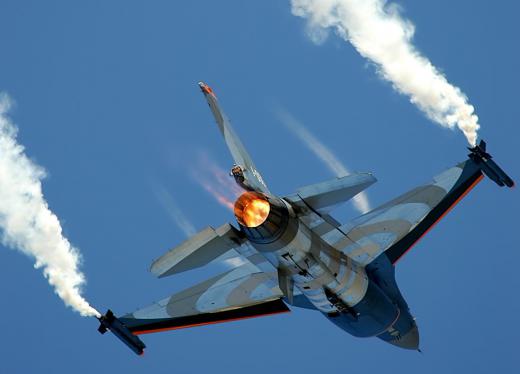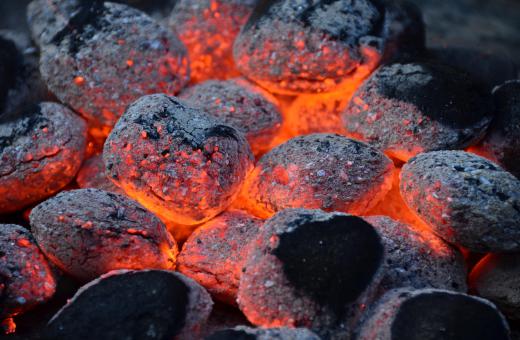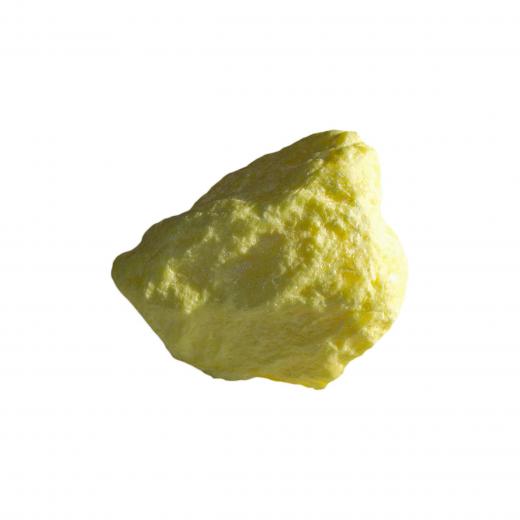What is a Combustion Reaction?
A combustion reaction takes place when a fuel and an oxidizing agent, or oxidant, react, releasing energy in the form of heat, and sometimes light. The most familiar processes of this type involve the burning of organic materials containing carbon and hydrogen, which combine with oxygen in the air to form carbon dioxide and water. Here the fuel is something like wood, gasoline or coal, and the oxidant is oxygen. Many other types of combustion reaction are, however, possible. Reactions of this type are essential to life, and are exploited to generate power, to provide heat, to run motorized vehicles, and in many other ways.
Oxidation

Oxidation is a chemical process in which electrons are removed from a substance, releasing energy. The term comes from the fact that the most familiar examples involve substances combining with oxygen, which gains electrons in the process. Other elements, however, can also act as oxidizers. For example, the element fluorine is a more powerful oxidant than oxygen. The process can occur extremely rapidly, which may result in an explosion where all the energy is released almost instantaneously, and hot gas expands violently creating a pressure wave and a loud noise. Alternatively, it may happen moderately rapidly, as in the case of a fire, or much more slowly, as in the rusting of iron.
Spontaneous Combustion
Usually, some energy has to be supplied to start a combustion reaction. This can be simply striking a match or generating a spark. After this, the reaction is self-sustaining, meaning that the energy released from the reaction itself keeps it going.

In some cases, however, there may be enough energy present at room temperature, or even lower, for the reaction to proceed. It all depends upon the oxidant and the fuel: if the oxidizing agent is powerful enough and the fuel easily ignited, they may catch fire when mixed, without the need for any heat to be supplied. This is known as spontaneous combustion. Strong oxidizers therefore need to be handled with great care, as they can cause fires or explosions if they come into contact with flammable materials.
Combustion Products

Since combustion usually involves elements in fuel combining with oxygen, the products are typically oxides. In organic substances, carbon and hydrogen generally combine with oxygen to produce carbon dioxide (CO2) and water (H2O). Other substances, however, can also burn. For example, sulfur and phosphorus burn easily, producing oxides. Metals, if powdered, will also burn, forming oxides, and often producing brilliantly luminous flames — magnesium, aluminum, and other metals are often used in fireworks for this reason.

Often, a combustion reaction involving organic materials is incomplete. In the case of wood, for example, some uncombusted carbon is released as tiny particles in the form of smoke, and, usually, some is left behind as charcoal. When there is not enough oxygen available to oxidize all the carbon in some fuels to carbon dioxide (CO2), another gas called carbon monoxide (CO) may be produced. When this happens in an enclosed space, as might be the case with a faulty boiler, the consequences can be fatal, as CO is toxic and odorless.
Factors Affecting Flammability

Aside from chemical factors, such as the reactivity of the fuel and oxidant, there are a number of physical factors that influence flammability. One of these is the surface area of fuel that comes into contact with the oxidant. It is not possible under normal circumstances to make a piece of iron burn, but in the form of an extremely fine powder, this metal will ignite spontaneously in air.
Liquid fuels do not actually combust, although it often appears that they do. It is the vapor released by the fuel that is catching fire, and so the flammability of a liquid is partly dependent on the amount of vapor it produces. The temperature at which there is enough vapor in the air for it to be ignited is known as the flash point; this is important information for the storage and handling of flammable liquids
Cellular Respiration
This is the process by which cells in living organisms oxidize nutrients such as carbohydrates into carbon dioxide and water. Since the end products are the same as those that would be produced if these raw materials were burned, the overall reaction can be regarded as combustion, but since it takes place in a number of separate steps, it is much slower than what is normally meant by this term. Nevertheless, it still produces heat, and helps maintain body temperature. In a well-known demonstration, a small amount of sugar is mixed with a strong oxidizer and ignited, causing it to burn fiercely enough to melt glass, showing how much energy there is locked up in sugar molecules. In the body, this energy is released much more slowly, but the principle is the same.
Uses
Early man first made use of fire to keep warm, and then to cook food, a practice that killed harmful microorganisms and parasites. The industrial revolution depended on the burning of fuels — initially wood, and then fossil fuels such as coal and oil — to provide the heat required to smelt metals. Today, combustion is used to generate electricity and manufacture a vast range of chemicals and products, and the internal combustion engine also uses the rapid burning of fossil fuel to provide the kinetic energy that powers cars and other vehicles.
AS FEATURED ON:
AS FEATURED ON:















Discussion Comments
How is combustion harmful?
How does Combustion actually work? I have no clue!
@ Anon28405- You may ask how combustion reactions produce water since you can’t see any, but water is most often formed as water vapor during combustion. If you look at a car tailpipe in the winter, you may have noticed that a few drops of water occasionally drips from the exhaust. This is one of the byproducts of combustion. The extreme cold is causing the rapid cooling of the steam that escapes with the exhaust, causing the exhaust pipe to drip a little water.
This also explains why you can see car exhaust in the winter. Just as the water vapor in your breath looks like steam, so does the water vapor in your exhaust. The denser, cold air causes the water vapor in your exhaust to compress, forming small droplets and making the vapor visible to the naked eye.
@ Anon28405- Combustion is one of the six common chemical reactions. Combustion is a type of reduction-oxidization (redox) reaction. Combustion is also unique from a redox reaction because it involves a carbon based element and an oxidizer.
When full combustion occurs, the result is an exothermic reaction that produces carbon dioxide and water. A partial combustion reaction results in carbon monoxide and water.
How does combustion work?
Post your comments